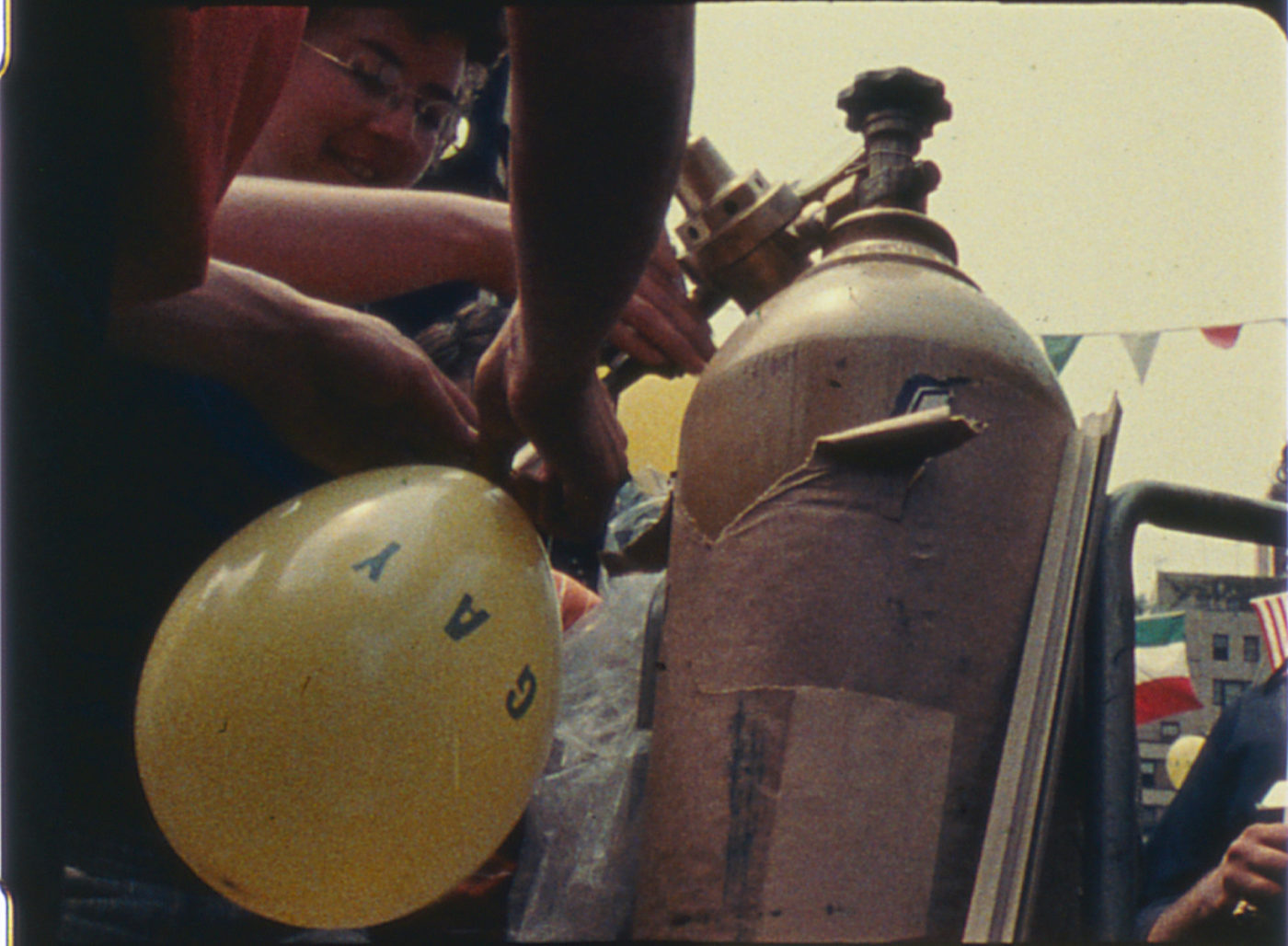Gay Power, 1971/2007/2012
2012
Sharon Hayes, Kate Millett and the Women’s Liberation Cinema
16mm film, color, sound
33 minutes
Dimensions variable
In November 2007, I ran into Stephen Kent Jusick, Executive Director of MIX NYC, the experimental queer film festival in New York City, on the street in the East Village. “I was justing thinking about you,” he said and asked me to put sound to 33 minutes of silent footage of the 1971 Christopher Street Liberation Day Parade and Gay-In that queer film historian and archivist Jenni Olson had recently found in a storage locker of filmmaker, artist and activist Susan Kleckner. I had the impression that maybe Stephen thought I was someone else but I said yes anyway. The footage was shot by the Women’s Liberation Cinema, a group that included Kate Millet, Susan Kleckner, Robin Mide, Lenore Bode and others, for a film that never came to be. Kleckner was battling cancer at the time. Kate Millett was living in the East Village. I contacted Millett and asked her if I could record her commenting on the footage she and the WLC shot 30 years before. The footage is familiar in many ways, a band of queer and trans people walking together up a street, strutting, hugging each other, blowing kisses to the camera. I found myself thinking about “Gay Power.” For the laziest of misunderstandings, I had always thought of “Gay Power” as “power-lite”. I didn’t think it held the same force as the “power” of Black Power or other liberation movements.
But looking at the WLC footage from 1971 allowed me to see that this nascent tribe of liberationists were powerful–constructing new set of relations between love, sex and politics. Because the expression of love, sexual desire, queer and trans sexuality was under constraint, love, sexual desire, the expression of queer and trans sexuality was a tool of resistance. Fucking was not ancillary to politics, not a libidinal excess to the liberation work, it was integral to it.
I made the work first for live performance: the raw film footage played while I spoke a text that was interspersed with Millett’s recorded commentary. In 2012, the performance was remade into a collaborative film installation.
Script Excerpt
-Can you see okay?
Susan Kleckner led the crew…is she coming?
-She might be.
Good, they did a good job of filming it.
Everybody looks so relaxed.
It was a very different parade then, in those days. I mean we were very afraid. We didn’t know what would happen to us. ….maybe our mother’s would see us on the evening news. It was very scary. We look very brave but maybe we aren’t.
There’s Jill.
But you know among ourselves, we felt strong but then seeing the faces lined up against us on the streets, it was different.
This footage of the 1971 Christopher Street Liberation Day Parade and Gay-In was shot by the Women’s Liberation Cinema, a group that included Kate Millet, Susan Kleckner, Robin Mide, Lenore Bode and others. They were working together on a documentary which would premiere later that year called Three Lives. What you are looking is raw footage. It is a document of the day. Kate Millet says that the fact that there is something for us to look at tonight, something tangible from their efforts shooting that day, is an accident of history.
The images that we are watching tonight unfold in a loop. They start at the end…the end of the march that is, the Gay-In in Central Park, and end again at the end which is also the beginning. We will return to Central Park.
